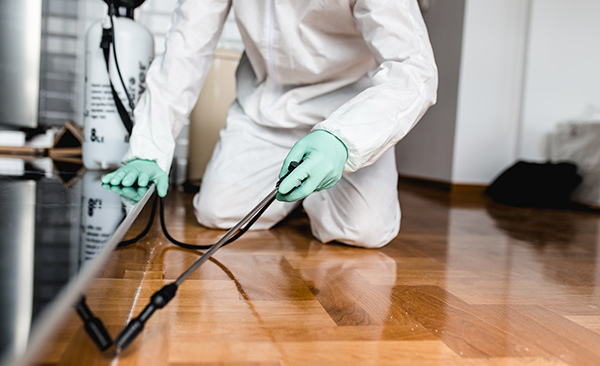Reliable Pest Control to exterminate bugs and rodents permanently.
Eco-Friendly Bug Control Approaches for Handling Wild Animals in Urban Areas
Urban areas often find themselves at the crossway of human activity and wildlife, leading to distinct difficulties in insect management. These approaches not only safeguard the setting but also enhance area interaction in wild animals monitoring. As city populaces continue to expand, comprehending the characteristics of wild animals interactions becomes increasingly critical.
Understanding Urban Wildlife Dynamics
Recognizing Urban Wild animals Characteristics is essential for developing reliable and green pest control strategies. Urban locations are increasingly ending up being habitats for various wildlife varieties, driven by factors such as habitat fragmentation, food availability, and human advancement. Recognizing these characteristics enables a nuanced method to pest monitoring that lines up with environmental concepts.
Urban wild animals often includes types such as raccoons, squirrels, and birds, which adapt to city environments, discovering specific niches in eco-friendly spaces, parks, and even property locations. Their presence can result in disputes with human beings, particularly when they manipulate human sources for food and shelter. Comprehending the actions and ecological duties of these types informs techniques that decrease unfavorable communications while promoting biodiversity.
In addition, recognizing the interdependencies within metropolitan ecological communities helps in identifying critical areas for environment conservation and repair. This expertise adds to the development of integrated insect monitoring (IPM) methods that consider the ecological equilibrium, thus decreasing dependence on damaging chemicals. By fostering conjunction in between people and urban wild animals, cities can create much healthier environments that benefit both locals and local environments, leading the way for lasting urban living.
Natural Repellents and Deterrents
All-natural repellents and deterrents supply a sustainable choice to conventional bug control approaches by taking advantage of the power of nature to keep undesirable species at bay. These environmentally friendly services commonly use plant-based components, essential oils, and other normally happening substances that hinder parasites without hurting the environment.
One efficient all-natural repellent is peppermint oil, which is understood to fend off rodents and insects. Its solid scent is unpleasant to lots of parasites, making it a prominent choice for metropolitan settings. Vinegar and citrus peels can serve as deterrents, as their solid smells are usually uninviting to various wild animals.
Furthermore, diatomaceous planet is an all-natural powder that can be spread in areas prone to pest activity, successfully dehydrating and deterring pests without posturing dangers to non-target species. Garlic sprays and neem oil are recognized for their ability to drive away a vast range of insects, consisting of both pests and larger wildlife.
Applying these all-natural repellents not only lowers dependence on chemical pesticides however additionally advertises a healthier urban ecosystem, cultivating an extra balanced coexistence in between people and wildlife. By making use of these approaches, metropolitan areas can effectively manage parasite populaces while lessening ecological impact.
Habitat Adjustment Strategies
Effective habitat adjustment techniques play a crucial duty in sustainable parasite monitoring by altering the atmosphere to make it less for pest infestations. By comprehending the environmental characteristics of city areas, homeowner can execute strategic modifications that prevent parasites while advertising biodiversity.
(Honey Bee Relocation)One primary technique involves keeping appropriate sanitation. This includes regular waste removal, safeguarding garbage can, and removing standing water to reduce reproducing websites for bugs and rodents. Additionally, landscaping methods such as choosing native plants can improve eco-friendly equilibrium, giving habitats for helpful microorganisms while minimizing resources for parasites.
One more important strategy is to seal access points in structures. Inspecting and fixing cracks in structures, wall surfaces, and home windows can significantly lower bug access. Developing physical obstacles, such as fences or plant buffers, can inhibit wild animals activity into human-inhabited areas.
Integrated Pest Management Practices
Structure upon environment modification techniques, incorporated pest management (IPM) techniques offer an all natural method to managing pest populaces while lessening environmental effect. IPM incorporates different approaches, consisting of biological, social, mechanical, and chemical controls, to achieve effective parasite monitoring.
Organic control involves the introduction of natural predators or bloodsuckers to lower pest populations. Cultural practices, such as plant rotation and cleanliness, disrupt pest life cycles and reduce their habitats - Pest control service. Mechanical controls, like catches and barriers, offer immediate alleviation from pest pressures without chemical treatment
Chemical controls are used as a last hotel, focusing on targeted applications that restrict harm to non-target types and the environment. The choice of ecologically friendly pesticides, when essential, is essential to the IPM framework. Additionally, keeping track of parasite populations and examining possible damages aids inform decision-making, guaranteeing that interventions are prompt and reliable.
Community Participation and Education

(Stable Fly Control)Workshops and informational sessions can furnish homeowners with understanding about indigenous types, environment preservation, and efficient non-toxic bug management strategies. Partnership with institutions, local companies, and federal government companies further improves instructional outreach, guaranteeing that essential details gets to varied audiences.
In addition, community-led efforts, such as neighborhood clean-up days and habitat repair jobs, not have a peek at this site just advertise biodiversity yet likewise strengthen neighborhood ties. Pest control service. By urging citizens to share their experiences and monitorings, areas can develop targeted methods that resolve particular local bug problems
Including comments from citizens into insect management plans allows a more responsive and adaptive technique to wildlife difficulties. Ultimately, informed and involved neighborhoods are key to attaining long-lasting success in eco-friendly insect control, causing much healthier metropolitan settings that value both human and ecological requirements.

Conclusion
In conclusion, environmentally friendly parasite control comes close to offer lasting options for taking care of metropolitan wildlife. By prioritizing environment alteration, making use of all-natural repellents, and carrying out incorporated parasite monitoring techniques, areas can promote a harmonious conjunction with neighborhood animals.